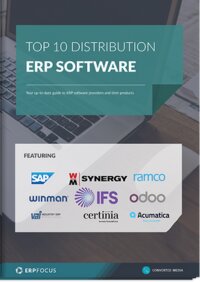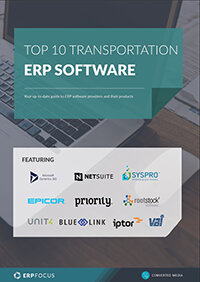Three new technologies your distribution ERP must adapt to
It’s 2017 and it’s time to take a moment to do some crystal ball gazing. In past years, ERP has essentially been motivated by the emergence of internalized cloud-operations, in addition to various affiliated product sets. However, external elements are beginning to create disruption in the market. Here are three of the more interesting opportunities that current distribution ERP platforms may have to respond to this year.
1. Augmented reality
In the distribution sector, augmented reality, or AR, has moved out of the realm of pure fantasy and toward reality. Consequently, one should assume that the product set will likely appear as initial add-ons to current ERP frameworks when it comes to near-term operations.
AR is oriented to streamlining and speeding end-to-end distribution operations including; digital logistics management and control, active distribution fleet monitoring, warehouse sensor alert and/or safety elements, active bin location logging, active inventory control, related robotic system interaction, warehouse-to-office communications, facility climate control, and real-time systems troubleshooting. AR systems are typically utilized in concert with various headgear-based elements including glasses, helmets and goggle-based components, supported by wearable computers.
Together these products allow human operators to interact directly with computer controlled systems on the basis of a 360 degree view, also sometimes known as active situational awareness, and even extend the wearer beyond shop and office by allowing supervisorial operators to ‘talk to’ at-large ‘smart warehouses’ both locally and remotely.
Consequently, any or all of these elements will offer a direct relationship with the ERP process whether it applies to monitor and control activities, or more administratively-oriented values such as warehouse HR or workforce standards components.
2. Expanded IoT
During last several years the Internet of Things (IoT) has grown to become a distribution ERP value-point, largely driven by market-entrenched interests in mobility. As one might expect then, IoT has become part of the essential fabric of distribution ERP activities since these management and logistical control components actively interact with virtually any kind of product; whether it relates to the active movement and monitoring of hard good such of smart entertainment systems, to managing overall distribution management.
Subsequently, this trend will continue, particularly since not only the products themselves are getting ‘smart’, distribution ERP platforms are getting ‘smart’ as well.
3. Automation
While this opportunity is more oriented to the utility side of any ERP platform, the value is still relevant to our 2017 distribution trend review. Due to the emergence of cloud as a central operational component for product manufacturing, various large-scale host networks including Amazon Web Services (AWS) and HP’s HPE infrastructure, have created hosts of internal toolsets that apply directly to the migration and active operation of ERP platforms including distribution operations.
As a result of these value-adds, distribution managers/operators have an ability to leverage and utilize these intrinsic software helpmate, to automate many manual utilities and/or processes such as warehouse delivery or inventory load scheduling, data normalization and monitoring, various security alarms, and other particularly low-level operations. Consequently, expect that as the cloud becomes more preeminent going forward; expect that automation associated with distribution ERP will become more the rule rather the exception going forward.
So there you go; just a couple of things to consider in ERP’s near-term. Enjoy your 2017 experience and look for even better business days down the road.
Free white paper

7 steps to selecting distribution ERP
Get expert advice on distribution ERP selection and requirements analysis

Featured white papers
-

Top 10 Distribution Software Comparison
Compare the best distribution ERP systems available today
Download -

Top 10 Transportation ERP Software Comparison
Get your free comparison of the top 10 transportation ERPs
Download -

7 steps to selecting distribution ERP
Get expert advice on distribution ERP selection and requirements analysis
Download
Related articles
-

ERP for Food Distributors: Key Functionality
In a modern world where products are tailored to consumers, why should ERP for food distributors ...
-

Secret KPI: Why Your ERP Implementation Team Matters More Than Software
Learn how Godlan ensures successful ERP implementation for manufacturers with proven strategies &...
-

Intelligent ERP systems: What AI can (and can’t) do
What AI in ERP really means for buyers in 2025

